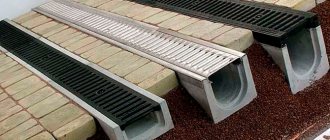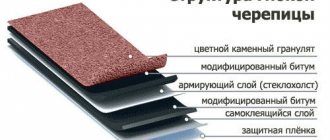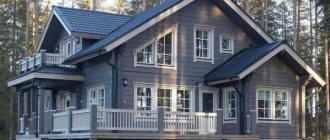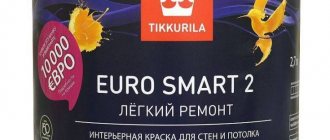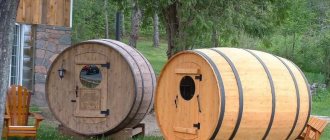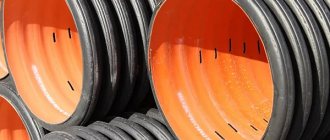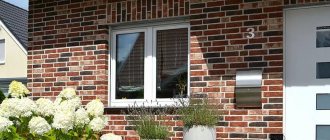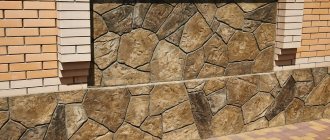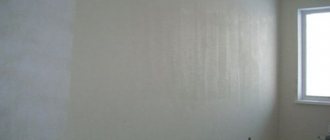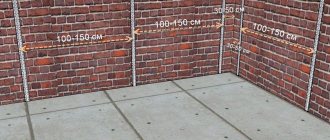Over the past couple of decades, the requirements for building materials regarding their thermal conductivity and insulation abilities have increased significantly. The growing cost of thermal energy, for which you need to pay the market price, forces you to re-arrange thermal insulation even for previously built buildings. We’ll talk about one such technology – heat-insulating plaster (or, more simply, warm plaster) below.
Despite the fact that warm plaster is also used for interior work, it is most often used outside, which imposes a number of restrictions on this material. This information material will be devoted to the composition of the mixture, the nuances of its use, as well as specific brands present on the market.
Insulating plaster – what is it?
Let's look at what warm plaster is. Everyone has long been accustomed to the fact that the classic plaster mixture is a cement-sand mortar containing certain additives. The latter can be lime (to prevent the walls from becoming damp) or all kinds of polymer adhesives (for better adhesion) or even dyes. But what is the mixture for insulating plaster?
In fact, everything is very simple: a filler with a thermal conductivity coefficient significantly lower than that of hardened cement mortar is added to the usual cement-sand mixture (which may also include other polymer components).
Such additives may include:
- expanded vermiculite;
- expanded clay;
- volcanic pumice chips;
- sawdust;
- polystyrene foam granules.
In essence, warm plaster is the same classic plaster mixture that has long been used for finishing buildings and structures, only with additional inexpensive “insulating” components.
What does the thermal conductivity of plaster depend on?
Plaster mortar is prepared from a binder (an adhesive substance that can harden when dried) and filler. The thermal characteristics of the mixture depend on the density of the components used in it.
The binder for exterior finishes is cement. Other solutions are used in facade work much less frequently due to their low water resistance. On the contrary, for internal surfaces, solutions with low heat capacity (the ability to accumulate heat) are more often used. These include clay, lime, gypsum.
Sand, marble and glass chips, slag, sawdust, expanded clay, all kinds of extrusions, perlite, vermiculite, foam glass are used as reinforcing and insulating fillers. Their heat transfer capabilities are lower, which makes the usual mixture heat-insulating.
Advantages and disadvantages of warm plasters
New properties are added to the familiar material, and since the laying technology has long been proven and is as cheap as possible, the use of such plaster for thermal insulation of buildings provides considerable economic benefits. And this is the first significant advantage of heat-insulating plaster.
The second interesting quality of this material is that such plaster can be used not only as insulation, but also as a humidity normalizer in the room. Some components (for example, sawdust) are able to absorb excess moisture in the air and release it at a reduced concentration of moisture vapor in the atmosphere. And, in addition, warm plaster is an excellent insulator from moisture, protecting capital structures from its effects.
Thirdly, you can easily make a mixture for warm plaster yourself - for this you just need to have the necessary components on hand.
Let us briefly list other useful properties of warm plasters:
- wear resistance;
- environmental safety and cleanliness;
- resistance to temperature changes;
- due to its high adhesive properties, warm plaster can be applied to almost any surface;
- the array forms a single, integral layer, which practically does not require a reinforcing mesh.
However, to be completely objective, it is worth mentioning the disadvantages of thermal insulating plasters. Compared to specialized insulating materials (for example, mineral wool), warm plaster, no matter what it contains as an insulating component, loses by a noticeable margin. To provide the same level of insulation as a stone wool slab, the layer of warm plaster must be twice as thick.
This is why many people call warm plaster a “half solution.” However, if we take into account its economic benefits and technological simplicity, then such a solution may often be quite sufficient.
What is the importance of thermal conductivity of plaster.
Thermal conductivity is the ability of a building material to transfer heat through its mass from hotter areas to cooler ones.
The higher it is, the faster the room cools down. In relation to plaster, this property is not as important as manufacturers convince. The point is in thickness - heat-insulating plaster occupies a small volume, the main load for heat conservation is placed on the material of the supporting structure and insulation.
However, plaster also contributes its share, so it is sometimes used for additional insulation of walls and ceilings.
Thermal insulation plaster is not an independent insulation, but can only serve as an additional energy saving measure.
Thermal conductivity depends on the density of the substance.
Varieties by composition
There are 2 types of heat-insulating plaster mixtures:
- Warm cement plaster. This includes all of the above cement-containing mixtures with the specified additives.
- Foamed plaster. A component is added to the cement-containing mixture that causes the formation of foam when interacting with water. The structure of the solution in this case will be similar to foam concrete in both its raw and hardened form. This type of plaster has significantly higher thermal insulation properties, but it requires mandatory subsequent processing - painting, since the porous structure, like a sponge, can effectively absorb moisture.
Let's sum it up
Warm plaster is used as a leveling building material, similar to its conventional counterparts. The mixtures are also used for treating facades and walls indoors with any humidity. A characteristic feature of this plaster is its heat-insulating property, along with which the coating does not allow noise to pass through.
The affordable cost of warm plaster and a wide range of applications have a clear advantage over analogues. In addition, you can prepare warm plaster with your own hands .
Rating of the best
Let's consider several main brands of mixtures for warm plasters:
UMKA® UB-21 TM
Here, ceramic silicon balls are used as a heat-insulating filler. Thanks to the porous structure of this filler, Umka warm plaster provides not only reduced thermal conductivity and a high level of heat conservation, but also high-quality sound insulation. In addition, an array of such plaster has a low specific gravity, due to which it is firmly held on the surface of the capital structure even without a reinforcing mesh.
PALADIUM Palaplaster-207
The sand-cement mixture here contains a special component as a heat-insulating filler - foam glass - a porous but durable filler in the form of granules. It does not contribute to the absorption of moisture vapor from the air, is absolutely “indifferent” to fire, and most importantly, it provides increased heat and sound insulation of the surface of the capital structure.
De Luxe "TEPLOLUX"
The plaster mixture is intended for laying on a concrete base or on foam concrete blocks - it is to these surfaces that the composition demonstrates the maximum degree of adhesion. The mixture contains plaster insulation - 3 mm granules of the same foam concrete (so this property of this plaster mixture is quite understandable).
UNIS TEPLON
This is a variant of gypsum plaster. Gypsum itself is significantly less thermally conductive than solid cement. However, to enhance the thermal insulation properties, perlite (or volcanic glass) granules are added to this mixture.
HAGAst AuBenputzPerlit FS-402
This plaster mixture is based on cement, but also contains perlite, which makes it possible to achieve high sound and heat insulation properties. The mixture is specially intended, mainly for finishing surfaces made of gas and foam concrete.
Knauf Grinband
This thermal plaster contains polystyrene foam granules as an insulating filler, with a fraction of no more than one and a half millimeters. In addition, the mixture contains polymer components that reduce the dispersion of the dried mass and prevent contact of polystyrene granules with moist vapor contained in the atmosphere.
Types of heat-insulating mixtures for plastering
*
Mixtures are divided according to purpose and type of filler used. Plaster for internal use is made on the basis of cement or gypsum and fillers:
- Perlite. The material has a porous structure, formed as a result of the melting of volcanic glass. It is resistant to temperature changes, hygroscopic, and biologically inert.
Perlite filler
- Expanded polystyrene granulate with high thermal insulation properties and low cost.
- Foam glass made from quartz sand. It is moisture resistant, the mixtures are allowed for use in rooms with high humidity.
- Vermiculite obtained from mica. It has high strength and is biologically inert. Not used for finishing rooms with unstable humidity conditions.
- Sawdust. For the production of warm plaster mixtures, only small wood sawing waste is used. They impart porosity to the material and ensure uniformity throughout the entire volume.
- Expanded clay sand. It is characterized by low specific gravity, porosity, and low thermal conductivity.
Expanded clay is one of the popular fillers.
Plaster for external use is made in the same varieties as for finishing inside buildings, but exclusively on a cement base.
Where is plaster used for wall insulation?
Thermal insulating plaster can be used for finishing capital structures both indoors and outdoors. Let's consider some features of both formats of its use.
Interior work
To finish the interior surfaces of a building, as a rule, a not too thick layer of plaster is applied. And it’s not at all a matter of the desire to save the useful volume of the premises; it’s just that plaster to insulate the walls from the inside will prevent the internal heat of the house from penetrating into the walls themselves.
What matters here is the so-called dew point, namely its exact location. At what point on the wall of a building does the temperature drop so much that the moisture in the air condenses? Obviously, if this point (or rather, an entire plane) is located inside the solid wall, then this will lead to its erosion - water is extremely dispersed, and its vapors are able to penetrate into all the pores and microcracks of concrete and cement masses. These vapors should not be allowed to turn into liquid (and then possibly freeze) directly inside the wall.
Previously, this was achieved through excessive heating of houses, associated with large energy losses (houses, like giant air heaters, heated the street). Now, heat consumption has been significantly reduced, and plaster on the insulation of internal walls can leave the outer layers of concrete masses “unarmed” from exposure to cold and moisture. Warm plaster is used to insulate walls from the inside, but mainly for the purpose of creating soundproofing of rooms. In this case, its layer should not exceed 30-35 mm.
For example, in Sweden, at the legislative level, there is a ban on insulating residential buildings from the inside (on the scale of private apartments).
External
But for finishing facades, heat-insulating plaster is used very widely. Here its layer, as a rule, is never less than 50 mm, and often reaches 100 mm.
In this regard, there are 2 main nuances:
- Such a mass of plaster must be laid on a reinforcing mesh.
- Dried plaster on top must be painted to prevent the absorption of atmospheric moisture by heat-insulating, but at the same time dispersed granules and materials.
Thermal insulating plaster for external use.
External wall insulation is more effective than internal insulation. According to the first scheme, heat is retained and accumulated inside the wall array. In the second, the wall is not protected, the thermal energy is evaporated.
Thermal insulating external façade plaster must have not only low thermal conductivity, but also sufficient moisture resistance. It’s not just about the safety and durability of the layer. Wet insulation conducts heat better. When the water in the thickness of the layer turns into ice, the insulation itself becomes a source of cold.
Wet insulation, including exterior plaster finishes, is much less protective of a home. When freezing, it cools the walls, impedes the movement of steam and quickly collapses.
Non-waterproof plaster coatings used for external thermal insulation plaster must be protected by curtain walls. Ventilated canopy structures are the most rational.
How to calculate mixture consumption?
As a rule, each manufacturer indicates on the packaging of the plaster mixture the rate of its consumption in terms of 1 m2 of surface to be finished. But if the mixture for plastering is prepared independently, you should keep in mind the average consumption rate (no matter what component composition we are talking about):
25 kilograms of the finished dry mixture when diluted with water should be enough to finish 1-1.4 m2 of wall surface with a 15 mm layer of thermal plaster.
Calculation of plaster consumption
When purchasing a dry building mixture, you can easily find its consumption on the packaging, because the manufacturer always indicates this figure in kg/sq. m. If you decide to make the solution yourself, you will have to take into account the average consumption rates depending on the size of the layer:
- with a plaster thickness of 2.5 cm, 10-14 kg of mass is consumed per 1 square meter. m;
- with a layer thickness of 5 cm, about 18-25 kg per 1 square meter is spent. m.
Typically, an improvement in heat and sound insulation is observed already when a plaster layer 0.5 cm thick is made. Of course, this is not enough for effective insulation, so this indicator should also be selected more accurately.
Layer thickness calculation
Most manufacturers advise applying a layer of mortar with insulating properties of sufficient thickness - 2.5-5 cm. This will allow the plaster to fully realize its heat-insulating abilities and create an additional protective layer. The choice of size of the layer should also depend on the thickness of the walls themselves. For example, to really reduce heat loss in a house with walls 50 cm thick, it is necessary to apply a plaster layer of 8-10 cm. For regions with extreme climates, individual calculations are required, as well as for non-standard base materials.
Application technology
Laying a layer of warm plaster is no different from applying traditional plaster. The process consists of 3 parts.
Preparatory stage
At the very beginning, you should prepare the surface. You need to clean it from any dirt, chips, peeling, and fill all cracks with putty. It would be useful to apply a primer layer, which will increase the adhesive ability of the wall.
Preparing the mixture
Each mixture requires its own amount of water for mixing - therefore it is strongly recommended to study the instructions (on the package) before opening it. In addition, some mixtures have a rapid crystallization period after wetting them with water, so you need to be clear about how much time you have for the entire plastering process.
The principle of applying building materials
The plaster material is applied to the wall in layers, each no more than 20 mm thick. In this case, each subsequent layer is applied no earlier than 4 hours after laying the previous one (so that the latter has the opportunity to set).
Preparatory work
Before applying warm plaster to the walls, they should be prepared for work.
To do this you need:
- remove protruding elements in the wall: pieces of reinforcement, brick or concrete protrusions;
- if there was an old coating on the wall (paint, putty), it should be removed;
- if there is insulating material or sand in the panel joints, everything must be cleaned;
- if there are cracks in the wall, they need to be sealed with sealant;
- degrease and clean the wall surface from dust;
- treat the wall with a primer liquid.
NOTE!
In order to ensure high adhesion of the solution to the base, it is recommended to apply a thin layer (from 3 to 5 mm) of the mixture after the primer has dried.
Complete drying is achieved after 24 hours in dry weather, then you can begin applying the main layers of putty mixture.
How to make warm plaster with your own hands?
One of the advantageous features of the material in question is that you can make warm plaster for interior or exterior finishing work with your own hands. Let's consider several options for preparing a mixture for heat-insulating plaster:
Plaster mixture using perlite:
- 1 part cement;
- 1 part sand;
- 4-5 parts perlite.
It is permissible to use PVA glue, but not more than 1% of the total volume.
Mixture using plasticizers:
- 1 part cement;
- 2 parts sand;
- 4 parts vermiculite (volcanic glass, which plays the role of a heat-insulating filler in the mixture);
- 50 gr. PVA glue onto a bucket of cement (10 kg).
In both cases, water should be added until the required mixture consistency is achieved.
Thermal insulating plaster for interior work.
Internal insulation is ineffective, since plaster is not able to protect the house from the cold. And walls without additional insulation quickly cool down.
To include them in the thermal resistance design, it is more rational to take the insulating layer outside.
However, heat-saving plaster for interior work will not be superfluous. Here it is advisable to consider it as a “repeller” of heat. So that thermal energy is not absorbed by the interior decoration.
For such layers, mixtures with a minimum heat absorption rate are used. So that when leaning against the wall, residents do not feel the unpleasant cold. This happens, for example, when plastering with cement compounds.
But the amount of absorption loses significance when the walls are subsequently decorated with vinyl wallpaper, clapboard or plastic. There is no point in internal insulation of a tiled wall (except when they are heated with electric IR films).
Useful tips and tricks
When applying the plaster mixture, it is extremely important to observe the temperature regime. The composition of warm plaster, due to the presence of a significant amount of filler in it, is less adhesive than classic plaster.
And you need to pay attention:
- on the atmospheric temperature at which work is carried out;
- on the wall temperature;
- on the temperature of the plaster mixture itself.
The ideal option would be if the surface temperature of the wall being finished and the ambient air temperature coincide, and the temperature of the mixture exceeds them by no more than 10°C.
The mixture for warm plaster has a lower specific gravity than the composition of traditional plaster. Therefore, it is necessary to use reinforcing mesh only if a relatively thick layer of this finishing coating is laid (more than 40 mm). And if the wall is plastered without a mesh, the applied mixture should be leveled relative to the pre-set beacons.
Characteristics of plaster
Thanks to warm plasters, you can quickly and effectively insulate homes and other buildings. Heat-saving plaster allows you to replace a layer of more expensive insulation, reduce the thickness of the brickwork, and reduce the overall load on the walls. The average technical characteristics of insulating solutions are as follows:
- specific gravity - 200-300 kg/cubic. m (3-4 times lighter than conventional plasters);
- fire safety group - NG-G1;
- high plasticity;
- solidity of the layer, absence of delamination and shedding;
- Suitable for surfaces made of brick, stone, concrete, plasterboard, cellular concrete, etc.
Reviews
Private reviews regarding the use of warm plaster for interior and exterior work can be found on any Internet portal that has a repair and construction thematic focus. And the best option is to turn to several resources at once (including forum ones). Only in this way can one obtain objective information and form a holistic opinion regarding the qualitative characteristics of a particular type of application of warm plaster in specific conditions.
Types and features
Gypsum heat-insulating plaster has minimal resistance to variable humidity. Therefore, it is used only inside dry rooms. Cement is often used as a base, since it copes with changes in operating conditions much better. For façade elements, exactly these compositions are used.
Plaster with thermal insulation additives for external use differs in fillers, which affect the characteristic properties of the mixture:
- Organic ones are represented by expanded polystyrene with a fraction of 1-1.5 mm, which is not very durable. Added to cement and lime compositions. The versatility of warm plaster is limited by its flammability. It is recommended to treat the coating with materials as a finishing decoration.
- Minerals make up for the deficiencies of organic matter. These include: quartz glass is hydro-resistant, does not allow heat to pass through and does not shrink; porous raw materials of volcanic origin : mica vermiculite is not afraid of anything except water; Obsidian perlite needs protection from moisture.
- Sawdust has a long drying time, but is great for working on brick and wood. Among these fillers are used: sawdust, paper.
The latter mixtures usually have cement or clay as a base. Manufacturers recommend using such mixtures for interior work. This is due to the fact that the presence of wind is not allowed during the drying process.
Mineral fillers also include pumice and expanded clay. These materials are inferior to analogues in all respects, therefore they are used extremely rarely.
Self-cooking
If you want to save on purchasing ready-made compounds, you can make warm plaster yourself.
A self-prepared mixture is somewhat colder than the branded one, but it will cost several times less.
Below we will consider the option of preparing a composition with polystyrene foam filler.
Screeding is performed in various types of rooms to level the surface and form the base of the floor. By clicking on the link you will find out the proportions of the floor screed solution.
A screed is an essential component of the structure of any floor, which is located under the floor covering and ensures the durability and durability of the final finish. Here's everything about how to make a floor screed.
Wall decoration is an important component of a truly beautiful and cozy interior. Here is complete information about stone-look wall panels.
To obtain the optimal density of the plaster (450-500 kg/m3), the following proportions are used:
- 30 liters of foam chips (no larger than 3 mm in diameter);
- 9 liters of fast-hardening cement (it is better if it is white cement M600);
- It is advisable to add a little detergent to the water that will be used to dilute the mixture (25 ml per 10 liters of water).
- To increase the plasticity and adhesive properties of the solution, you can add 1 kg of slaked lime to the composition.
Warm plaster mixtures
"Warm" plaster mortars
Plaster mortars are used for interior and exterior finishing when leveling walls and ceilings for aesthetic and sanitary purposes, to protect building structures from atmospheric influences - wind, rain, hail and dampness. In addition, lightweight plaster mixtures can increase the thermal insulation of walls, increase sound insulation, and increase the fire resistance of building structures.
Mortars for exterior plastering
Compared to conventional cement-sand mortars, vermiculite mortars, due to their high porosity, have 2-4 times less volumetric weight and 4-6 times less thermal conductivity. They belong to the group of light or “warm” solutions.
A layer of “warm” cement-vermiculite plaster 2.5 cm thick can replace a layer of cement-sand mortar 10-15 cm thick. With a thickness of cement-vermiculite plaster up to 3 cm, the thickness of a brick wall can be reduced by about 25% .
At the same time, the sound absorption coefficient of vermiculite plasters is 0.2-0.65, and that of ordinary sand plasters is 0.015-0.02.
Mortar mixtures based on fine (0.6-2.0 mm) and dusty (up to 0.6 mm) vermiculite have high plasticity, workability and rubability. Vermiculite plaster mixtures do not crack or shrink when dry.
Table 1
The compositions and properties of “warm” plaster cement-sand mortars based on vermiculite of fine and dusty fractions are given.
Cement: Sand: Vermiculite (in volume fractions)
Source
Properties and scope
Special additives endowed the heat-insulating mixture of decorative plaster with universal properties. It can be used to decorate walls inside the house, as well as as an external covering.
Warm plaster is well suited for sealing gaps and cracks, joints between walls and building floors. With its help, you can insulate the basement of the house and design window slopes.
But, perhaps, the façade of a building needs insulating finishing most of all, since it is the one that is actively exposed to the external environment (rain, wind, low temperatures).
In addition, the low thermal conductivity of the plaster ensures heat savings inside the building, and the coating itself has the properties of a thermos - in winter it prevents heat from escaping, and in summer it protects the room from the heat.
Since the finished solution has significant weight, the plaster is applied with a thickness of 25 to 100 mm, but for a more effective thermal insulation effect a layer of 100-120 mm is required.
However, such finishing puts a serious load on the wall structure, and applying a thick layer is not an easy task.
Manufacturers and prices
The list of companies and the thermal insulation mixtures they produce is long. Popular ones:
- Umka UB-21 (Ecotermogroup company) is a warm plaster made of lime, cement, sand and foam glass for the northern regions, which requires finishing. With reinforcement, up to 10 cm is applied. Other insulating mixtures are UB-212, UF-2.
- Cement Knauf Grűnband is made with expanded polystyrene. The permissible layer is up to 30 mm.
- Unis Teplon has a gypsum-perlite composition that does not require finishing.
- Au Benputz Perlit based on Portland cement with perlite filler. You can't do without finishing.
- The Teplolux DeLuxe cement mixture retains heat using foam glass. It is also not final.
- Thermo Um is universal - used for facades and rooms. The mixture is hygroscopic.
Prices vary. On average, the price of 1 kg of dry mixture ranges from 11 to 21 rubles.
As practice shows, for the main areas of our country, heat-insulating plaster is not yet a panacea. However, its use allows not only to reduce heat loss, but also to reduce the noise level in the premises. For the southern regions, it is an excellent option for insulating houses.
Types by filler type
Depending on the filler, thermal insulation compounds have different properties:
- sawdust mixture is the most budget option, which is well suited for self-preparation. Can be used for finishing wooden and brick surfaces. The disadvantage is that the solution takes a long time to dry (about two weeks);
- composition with polystyrene foam filler. The material has good thermal insulation properties, but at the same time low strength, so it is advisable to cover such finishing with an additional protective layer;
- perlite mixture. The filler is made of volcanic glass, which is heated to a high temperature. The heated material swells, resulting in the formation of many air bubbles - they give the composition thermal insulation qualities;
- the disadvantage of perlite is that it absorbs water well, which is why such a coating will require additional waterproofing;
- plaster with vermiculite . This filler is expanded mica. It has high heat resistance, making it resistant to high and low temperatures.
Work on the reinforcing layer
The reinforcing plaster layer is intended for internal strengthening of a thick coating, applying it to the facade insulation, at the joints of layers with different shrinkage characteristics, as well as in the case of plastering a building before its shrinkage is completed. For example, a reinforcing layer is made where part of the wall is made of gas silicate blocks, and part of it is made of brick. This section of the plaster coating must be reinforced. It is carried out using a plastic or fiberglass mesh, which has sufficient strength and is not afraid of the internal alkaline environment of the insulating plaster coating. Reinforcement work is carried out inside the solution. A layer of the mixture is applied to the ceilings and walls, then the mesh is laid out and recessed. On the facade walls on top of the insulation, the reinforcement work is slightly different. First, the solution is applied in strokes, then the mesh is attached, and then plastered. They work with spatulas and polishers. When the layer has dried, apply the next one on top of it in the usual way.
What mixtures are on sale?
This material has been used in construction relatively recently, but due to its properties it is gaining more and more popularity every year. The most famous brands:
- Unis Teplon white and gray - gypsum heat-saving plaster with perlite filler. Designed for interior decoration of walls and ceilings in rooms with normal humidity. It has good vapor permeability, so it maintains a comfortable microclimate in the house. Eunice Teplon can serve as a base for wallpaper, tiles or paint. Instructions and characteristics.
- Knauf Grünband is an insulating cement plaster with expanded polystyrene and hydrophobic additives. Suitable for aerated concrete, concrete, brick and ready for any subsequent finishing. Used for plastering walls outside and inside the house. The finely dispersed structure of the mixture allows it to be formed into dense solutions that are easily applied both manually and by machine.
- Ivsil : high-quality and relatively inexpensive plaster Ivsil Thermosil with penostek foam glass is used for thermal and sound insulation. The binder is cement with polymer additives. Suitable for covering external walls, windows and communications.
- Ecothermogroup : Umka thermal insulation mixtures have good heat and sound insulation properties. The composition includes: binders (cement, lime), flint filler and polymer modifying additives. Umka is lightweight and sufficiently durable.
- Teplover : produces a cement-lime mixture with the addition of expanded vermiculite and perlite. Like other cement-containing plasters, it is suitable for outdoor use and wet rooms.
- Houncliffe is a heat-saving composition made of cement, lime, composite filler of our own production and polymer binders.
- The bear is now produced under the WarmMix . Foam glass is used as a filler. Features low thermal conductivity (0.065 W/m*K)
- Ceresite CT 24 Light contains perlite, it serves more to lighten the cement mortar. This is primarily a leveling plaster.
